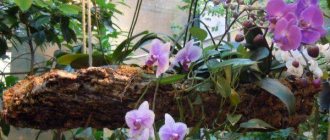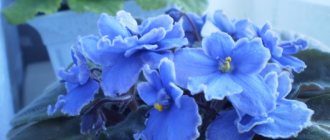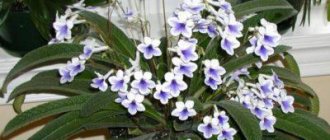Forest violet or Viola (from the Latin Viola) is a modest, delicate and beautiful flower of the northern latitudes. Various sources describe from 500 to 700 species of this wild plant of the Violet family. They grow primarily in the Northern Hemisphere in areas with moderately cold climates.
The plant is native to East Africa. Viola was first shown at an exhibition in 1893. Since then, cultural selection of flowers began.
Most species are found in North America and Japan. But wild violet grows in the Andes, Australia and New Zealand. In Russia, cultivated varieties are more common - Pansies.
The herb of individual forest violets has medicinal properties.
Description of the forest violet
The plant is perennial, low, creeping. Compact bushes up to 15 cm in height. Branched rhizomes produce new shoots every year, on which young rosettes of leaves are formed. One specimen can grow in two years and occupy an area of 1 m2.
The violet has no stem; the leaves are small or large, round, heart-shaped, depending on the type, and collected in a rosette. The lower tier of leaves is noticeably larger than the upper. The leaves do not die off in the winter; they overwinter under the snow. The fact that the leaves are heavily pubescent over the entire surface helps them cope with frost.
The flowers are five-petaled, multi-colored, very beautiful. Small – up to 1.5 cm in diameter. Some have a pleasant subtle sweetish aroma. The smell is stronger in the morning and evening hours. In hot weather there is almost no smell.
The colors vary from soft blue and light blue to violet and lilac. The core is predominantly in shades of yellow, bordering on white.
The forest violet blooms already in April, when young leaves have not yet appeared. Flowering lasts until September. Wild viola serves as a honey plant, but does not require outside pollination. Reproduces vegetatively.
In autumn, the fruit ripens in a capsule with small, moist brown seeds.
When and how does it bloom
Violet Ek - description, varieties and characteristics of varieties
The flowering period of wild violets differs depending on the type of flower and growing conditions. Most common varieties bloom continuously throughout the summer. Some violas, such as dog viola, hill viola and sweet viola, flower in late spring and early summer. No special additional care is required at this time.
Most wild violets have flowers consisting of five petals, 2 of which are located at the top and 3 at the bottom. They can be divided or fused at the base. The flowers of certain species, such as the rare cut violet, are more similar to cyclamen.
Types of forest violets
In Russia, about 20 species are found in natural conditions:
| Name | Growth | Description of flowers | Flowering period |
| Tricolor (Pansy) | In the forest and countryside - on arable land, in vegetable gardens, like weeds. | The upper two petals are blue, the lower three are white, and the center is yellow. | May – September |
| Doggystyle | On the edges, in sparse young growth and in the field. | Small, even blue color. | May |
| Bolotnaya | Damp places are not only swamps, but also mossy forests and water meadows. | Light blue, almost white with dark veins. | May – August |
| Field | Fields, forest clearings, forest edges, roadsides. | Similar to the Tricolor, but white, miniature with a bright yellow mouth. Height up to 30 cm. | April – September |
| Fragrant | Forest | Purple, bright blue, with a pleasant sweet aroma. | April May. |
| Altai | Mountain slopes. | Violet-blue with a yellow center. Height up to 20 cm. | From the end of April 40-45 days. Repeatedly in September until the first snow. |
| Yellow | Fertile soils of sparse, well-ventilated forests. | Yellow-green, bright. There are purple veins on the back of the petals. | June July. |
| Kholmovaya | In light forests, on open slopes, under bushes. | Light blue, occasionally purple, fragrant. Large, on a long peduncle. | May June. |
| Notched | Endemic to Siberia. Not found in other areas. | Bright purple, graceful, raised above the bush. The shape resembles cyclamen. | June July. |
| Aetolian | Sunny places, loose soils, rocky ledges. | The upper petals are yellow, the lower petals are orange. | From May and all summer. |
| Dubravnaya (mountain) | In the European part of Russia, at the foot of the Caucasus Mountains, in the south of Siberia. | Light blue, similar to dog violet flowers, but larger, and the stem is higher - up to 25 cm. | May – July. |
| Peach leaf (pond) | Rarely found in central and some regions of Siberia. | Long peduncles, small flowers of a characteristic milky white color with blue. | May June. |
| Purple | A rare species, it grows only in the Caucasus mountains. | It blooms profusely with small purple flowers, collected in an inflorescence-spike of 20 pieces. Pleasant, but doesn't smell much. | Twice – in spring and autumn. |
The most popular varieties
Among the most common varieties are the following:
- “Isadora” is a flower somewhat reminiscent of peonies.
- “Lituanica” - looks like a mixture of tea rose, dahlia and rosehip.
- “Rosemary” is one of the most delicate representatives of violets with a beautiful purple pattern on a pink background.
Violet “Isadora”
Violet “Lituanica”
Violet “Rosemary”
Of course, these are not all varieties loved by many. You can also note “Darling”, “Paul Bunyan”, “Duchess” and others.
Violet “Paul Bunyan”
Sowing seeds and caring for forest violets
The seeds germinate three weeks after planting. Moreover, they can be sown in spring, summer and autumn. Only freshly harvested seeds are used, as they lose their viability the following year.
You can grow seeds and seedlings. To do this, take ordinary leaf soil, add sand, peat and a little humus to it. The small achenes are simply laid out on top of the loosened soil and lightly sprinkled. Then the area is moistened and covered with film.
The only thing that is required after the seeds are in the ground is daily watering and aeration until germination.
Field violet is easily propagated by seeds. It is easier and faster to plant forest plants by digging up the budding rosettes of leaves. This is done after spring flowering. In the fall, plants may not have time to take root before frost.
They dig up an adult bush and select young rosettes with roots, which will serve as planting material. Large bushes are planted one at a time, small bushes - two at a time. The distance between seedlings is 20-30 cm.
So, already in the second year the forest violet will bloom in the garden or under the window.
The advantage of the plant is that it does not require constant careful care. The wild violet winters quietly without shelter and is drought-resistant. It prefers shaded areas of the garden, but can also grow in sunny meadows if you don’t forget to water it.
Viola reproduces well by self-sowing. In this she is assisted by garden ants, who carry the seeds around the area.
Fertilizing with regular humus infusion or complex fertilizers for flowering plants. But this is exactly the plant that is better to underfeed than to overfeed. For better rooting, young shoots are mulched with light humus.
In shady places, viola flowers are paler, but flowering lasts longer. She doesn't like stagnant water in the soil - she starts to get sick. Therefore, it is better not to grow it in the lowlands.
The creeping nature of the shoots is advantageous on gentle slopes and alpine hills, where forest violets grow to form a blooming carpet.
We must be prepared for the fact that the plant may fill more than the area allocated for it. In such cases, it will be necessary to remove the shoots by pinching or cutting them, like the mustache of garden strawberries.
Growing
You can grow decorative garden violet, but if you bring it from the forest and plant it in the garden, it will immediately begin to develop new territories.
Preparing for landing
The soil for planting violets should be prepared in the fall. Choose a lighted place, perhaps with a faint shadow. The plant loves the morning sun, but does not tolerate scorching heat and drought. Soils with neutral acidity are prepared for planting. The area should be dug up in the winter, simultaneously introducing humus and superphosphates into it.
Before planting in the spring, the area must be loosened to enrich it with oxygen. The violet is placed in a sunny place with unobtrusive shade; the sun provides it with abundant flowering. Seedlings or seeds are planted in the prepared soil. The soil should be of average moisture. In the forest, this plant chooses lowlands and has a sufficient amount of moisture.
Diseases of forest violet
The worst enemy of violets is disease.
| Disease, pests | Signs | Causes, pathogens. |
| Root rot | The roots rot, then the stem and leaves. The plant dies. | Pathogenic fungi that can remain dormant in the soil for a long time. Fungal disease occurs at low temperatures and high humidity. An acidic soil environment contributes. |
| Gray rot | Gray fluffy coating on the upper parts - peduncles and seed pods. | |
| Powdery mildew | A white coating in the form of powder on leaves and flowers. Most often occurs in early summer. | |
| Rust, spotting | Brown spots on green parts of plants. Drying. | |
| Smut | Swelling blisters on the petioles and leaves, filled with dark liquid. | |
| Blackleg | Disease of seedlings and seedlings. The base of the stems darkens, the leaves droop. Death occurs within 3-4 days | |
| Late blight | Penetrates through the pistil or thin roots. | |
| Variegation | The leaves acquire a variegated, marbled color, dry out and die. | Virus. Carried by aphids. |
| Ring mosaic | Rings of dark green color on the leaves followed by necrosis. | |
| Clover cutworm (pearl cutworm) | The tips of the leaves are eaten away. It develops from May to July during the feeding period of the larvae. | Moth larvae with a wingspan of no more than 4.5 cm. Orange with black speckles, the back side of the wings is silvery-pearl. |
| Nematode | The above-ground parts or roots are affected, depending on the type of parasite. Plants are oppressed, lag behind in development, and their decorative properties suffer. | Parasites – aerial and ground nematodes (strawberry, root-knot). |
Fighting diseases of wild violets is very difficult. Often the entire plantation dies. If the species is rare and it is not possible to restore it, you should still try to save the plant.
Diseased parts are removed and affected plants are destroyed. For survivors, they are sprayed with special antifungal drugs and potassium-phosphorus fertilizers are applied.
High resolution photo
The images below are clickable and refer to the original high resolution photographs.
What is the difference between wild violets and indoor violets?
Indoor violets or Saintpaulias have nothing in common with forest violets. They are different and grow in different conditions. Both plants are herbaceous and the shape of the flowers is very similar.
Saintpaulias, unlike wild violets, do not tolerate direct sunlight. Saintpaulias do not tolerate watering on their leaves well and may die from such a procedure.
Use in folk medicine
The plant contains large quantities of essential oils, flavonoids, vitamins A, C, E, fats, and carotene. Due to the alkaloids it contains, it is poisonous. Therefore, it should be used in home medicine with caution. It would be best to consult a doctor.
Forest violet helps in the treatment of many diseases with folk remedies:
- Febrifuge.
- Gargle with a decoction for inflammation.
- Promotes the separation of mucus from the respiratory tract.
- Treats headaches.
- Has a diuretic effect.
- Has disinfecting properties.
- Hemostatic - for women with complications after childbirth and during menopause.
- Anti-allergenic, helps with diathesis in children.
- Antirheumatic (in the form of compresses)
In aromatherapy, the smell of violets calms the nerves, even helps with excitability, hysteria, and seizures. Increases vitality and immunity.
In cosmetology, violet oil smoothes wrinkles, heals cracks and chapped lips. In high concentrations, violet extract is poisonous. Therefore, violet-based preparations should be used with caution and kept out of the reach of children.
Pest prevention
Violet Blue Mist - description and characteristics of the variety
Preventative measures against parasite attacks include compliance with all necessary growing conditions. It is necessary to regularly inspect leaves and flowers.
If the plant is attacked by nematodes or clover cutworms, then treatment should be carried out already at the initial stage of infection. At this point, you can still use traditional methods. If there are a lot of insects, you can only get rid of them with the help of chemicals.
Can it be planted indoors?
The white forest violet, like other types of wild flowers, is very difficult to tolerate indoor conditions. They need a wide area to grow. In a small pot, the root system will rot. This will lead to death.
Legends: the place in history where they grew up
There are many legends, stories, myths, signs and superstitions associated with violets. They talk about where the flower comes from and how it could have been born.
The ancient Greeks dedicated a whole legend to the violet telling about its origin. One day, the god of light and sun Apollo incinerated a young nymph with hot rays. The girl, languishing from the heat, with the last of her strength asked the great Zeus for help.
According to legend, Zeus created the violet to save it from Apollo
He took pity on the poor thing and turned her into a violet, hiding her from the scorching sun in a shady forest near the bushes. He specially hid her so that no one but him could admire the gentle beauty. He alone could enjoy the beauty of the violet until the day his daughter Persephone came for a walk in the forest.
She found a beautiful violet and picked a bouquet. When Persephone turned back, she was kidnapped by Hades. Frightened, she dropped the bouquet, and delicate flowers woke up from Olympus to the ground.
Among the ancient Greek legends there is another story about the appearance of the violet . One day, the goddess of love and beauty Aphrodite wanted to plunge into the gentle waters of the grotto, but noticed several men who were spying on her, wanting to see the goddess’s perfect body.
According to another legend, violets appeared at the request of Aphrodite
She got angry and demanded from Zeus the most cruel punishment for the curious - death. Zeus did not carry out his harsh will and turned the men into beautiful flowers, which still resemble curious eyes.
Violet is influenced by the psychological situation in the apartment and the mood of the residents. It is considered a symbol of stability and harmony. It has a beneficial effect on the home atmosphere, cleansing it of negative energy and bringing well-being and prosperity to the home.
If a flower dies, it is believed that she has taken over the resident's disease. When someone in the house is sick, the plant gradually withers, sharing his pain with the sufferer. Violets of different colors perform different functions.
White flowers help young children fight aggression. Varieties with white flowers are recommended for people with a fine mental structure: a person stops getting upset over trifles and worries less. White violets help to survive a breakup with a loved one and cleanse the soul from quarrels.
Red and pink flowers have a beneficial effect on health. Red varieties help in the fight against addictions and bad habits.
Red violets are well suited for people with a pessimistic attitude and dissatisfaction with life.
Varieties with red and pink flowers help overcome depression.
Purple flowers are recommended for people with the professions of psychologist and teacher. This color is a symbol of wisdom and spirituality. Purple violets help to find common ground and establish contacts.
In addition to the beneficial moral influence on a person, they can also bring practical benefits. They say that they can drive ants out of the house. Violet is an indicator of a healthy family and a favorable psychological environment in the house, so it should be carefully looked after.











